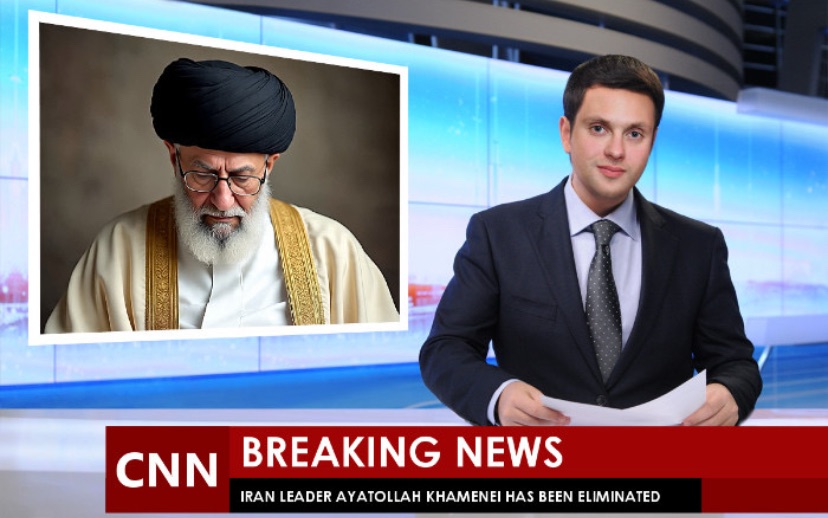NFL
Breaking News: Ayatollah Ali Khamenei, Iran’s Longtime Supreme Leader, Reportedly Eliminated in Targeted Strike

Iran in Crisis: Reports of Ayatollah Ali Khamenei’s Elimination Spark Global Speculation
Tehran, June 20, 2025 – Unconfirmed reports circulating on social media and opposition Telegram channels have ignited a firestorm of speculation, claiming that Iran’s Supreme Leader, Ayatollah Ali Khamenei, has been eliminated. These reports, emerging amid escalating tensions with Israel and the United States, have yet to be substantiated by official sources, but they underscore the precarious state of Iran’s leadership as the country faces unprecedented internal and external pressures.

A Region on Edge
The rumors of Khamenei’s death come against the backdrop of Israel’s aggressive military campaign, dubbed “Operation Rising Lion,” which has targeted Iran’s nuclear facilities, military infrastructure, and key regime figures. Israeli airstrikes have decimated much of Khamenei’s inner circle, with senior military commanders like Hossein Salami, Amir Ali Hajizadeh, and Mohammad Kazemi reportedly killed in precision strikes. The Israeli Defense Forces (IDF) also claimed to have eliminated Ali Shadmani, described as Khamenei’s closest military advisor, in a strike on a command center in central Tehran.
Israeli Defense Minister Israel Katz has openly declared that eliminating Khamenei is a war goal, likening the 86-year-old leader to Adolf Hitler and Saddam Hussein. “A dictator like Khamenei, who heads a country like Iran and has made the destruction of the State of Israel his declared goal, cannot be allowed to continue,” Katz stated, signaling Israel’s intent to destabilize Iran’s regime. Prime Minister Benjamin Netanyahu echoed this sentiment, suggesting that Khamenei’s elimination could end the decades-long Israel-Iran conflict.
Khamenei’s Whereabouts and Health in Question
Adding fuel to the speculation, reports from Iran International, an opposition outlet, claim that Khamenei has been hiding in an underground bunker in Tehran’s Lavizan area since Israel’s airstrikes began. Sources suggest he is accompanied by his family, including his son Mojtaba, a potential successor. A forensic analysis of Khamenei’s latest televised address on June 18, 2025, noted technical deviations—lower video quality, a lapel microphone instead of professional equipment, and downsampled audio—suggesting efforts to conceal his location.
Further complicating the narrative, Iran International reported that Khamenei, who has ruled Iran since 1989, may have been sidelined from key decision-making due to a mental breakdown triggered by the ongoing conflict. The outlet alleges that surviving military commanders have excluded the aging leader from sensitive national security discussions, citing his deteriorating mental health. These claims remain unverified, but they align with earlier reports from late 2024 suggesting Khamenei was battling terminal cancer.
Iran’s Response and Regional Implications
Despite the reported losses, Khamenei—or those acting in his name—has projected defiance. In his June 18 address, he warned the United States of “irreparable damage” if it intervenes militarily and vowed to “punish” Israel. Iran claimed to have launched hypersonic missiles at Israel, a first in the region, targeting IDF facilities but inadvertently striking civilian areas, including Soroka Medical Center in Beersheba. These actions have intensified international concerns about escalation, with the U.S. reportedly urging Israel to refrain from assassinating Khamenei.
The elimination of Khamenei, if confirmed, could plunge Iran into chaos. His death would leave a power vacuum, with no clear successor. Mojtaba Khamenei, his son, is a leading candidate, but the secretive selection process for Iran’s Supreme Leader, controlled by the Assembly of Experts, remains uncertain. The loss of key military figures has already weakened Iran’s command structure, and internal dissent, coupled with economic strain, could push the regime toward collapse.
Global Reactions and Uncertainty
The international community is on high alert. U.S. President Donald Trump, who has oscillated between threatening Iran and vetoing Israeli plans to target Khamenei, has demanded Iran’s “unconditional surrender” while stating that the U.S. would not kill Khamenei “for now.” Netanyahu, however, has dismissed negotiations, focusing on dismantling Iran’s nuclear and missile programs.
Social media posts on X reflect the chaotic sentiment, with unconfirmed claims of Khamenei’s elimination spreading rapidly. These reports, while lacking official confirmation, highlight the intense speculation surrounding Iran’s leadership. Iranian state media, meanwhile, has denied similar claims about other figures, such as top advisor Ali Shamkhani, who was initially reported dead but later said to be recovering from injuries.
The Road Ahead
As of now, no official reports confirm Khamenei’s death, and the lack of clarity fuels both hope and fear. For Israel, eliminating Khamenei could be a decisive blow to Iran’s regime, but it risks triggering a broader conflict. For Iran, the loss of its Supreme Leader could unravel decades of theocratic rule, with unpredictable consequences for the region and beyond.
The coming days will be critical. If Khamenei is alive, his regime faces mounting pressure to respond to Israel’s onslaught while maintaining internal control. If he is indeed gone, the world may witness the collapse of Iran’s Islamic Republic—or a desperate retaliation that could engulf the Middle East in all-out war.
Disclaimer: The claims of Ayatollah Ali Khamenei’s elimination remain unconfirmed by official sources. This article is based on available reports and should be treated as speculative until verified.












